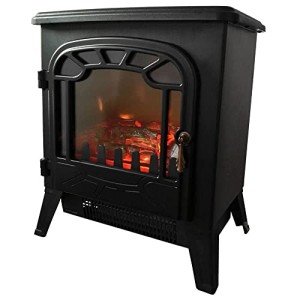7 Simple Tips For Moving Your Small Fireplaces
A Comprehensive Guide to Small Fireplaces: Efficient Heating and Cozy Living
In an age where energy performance and space optimization are ending up being progressively important, small fireplaces have actually become an appealing option to traditional, large hearths. These compact heating options offer warmth and a focal point for any space, heightening both convenience and aesthetic appeal. This post checks out the different kinds of small fireplaces, their advantages, installation factors to consider, and maintenance tips, ultimately helping property owners make informed choices when thinking about these charming heating alternatives.
Understanding Small Fireplaces
Small fireplaces provide a variety of styles, including electric, gas, ethanol, and wood-burning designs. Each type provides unique benefits and style possibilities, making them suitable for numerous living areas.
Types of Small Fireplaces
Fireplace Type
Description
Pros
Cons
Electric
Utilizes electrical power to generate heat. Offers Cheap Fireplaces , consisting of wall-mounted and freestanding systems.
- Easy to set up
- Low upkeep
- No venting needed
- Limited heat output
- May sustain greater electrical power expenses
Gas
Burns gas or gas. Often readily available as logs in a traditional fireplace or modern styles.
- Efficient heat output
- Cleaner than wood
- Easy ignition
- Requires gas line installation
- Some units need venting
Ethanol
Burns bioethanol, offering genuine flames without a chimney.
- Eco-friendly
- Portable
- No installation needed
- Limited heat output
- Higher fuel costs
Wood-Burning
Traditional fireplaces that burn fire wood. Often utilized in more rustic settings.
- Great heat output
- Rich atmosphere
- Can be utilized during power interruptions
- Requires a chimney
- Regular upkeep and cleansing
Benefits of Small Fireplaces
- Space Efficiency: Small fireplaces are perfect for homes, condos, and smaller sized homes. They take full advantage of warmth without using up excessive flooring area.
- Cost-efficient Heating: In specific cases, small fireplaces can supplement main heating unit, reducing general energy costs while creating a more comfy environment.
- Ambiance and Aesthetics: They provide a welcoming centerpiece to a space, producing a cozy environment best for relaxation and celebrations.
- Versatility: Available in various styles and styles, small fireplaces can complement any decor, from modern minimalist to rustic traditional.
Setup Considerations
When contemplating a small fireplace, installation is an important aspect that can affect the option of model. Below are practical considerations:
- Local Regulations: Building codes can vary by place; always check regional guidelines before installation.
- Ventilation Needs: Depending on the type, small fireplaces might need various ventilation systems. Gas fireplaces might require venting outdoors, while electric designs don't.
- Power Source: Electric designs require distance to electric outlets, while gas and ethanol designs may need a gas line or fuel storage.
- Weight and Structure: Installing wall-mounted units may need enhanced wall locations, whereas free-standing models are simpler to relocate.
Upkeep Tips
Like any other home device, small fireplaces need routine maintenance to function effectively and safely. Here are essential upkeep ideas for numerous fireplace types:
For Electric Fireplaces:
- Cleaning: Wipe down the unit with a soft cloth to get rid of dust and keep the heater ducts clear.
- Evaluation: Check the power cord routinely for any damages or indications of wear.
For Gas Fireplaces:
- Annual Inspections: Schedule yearly evaluations by a professional to make sure safe gas circulation.
- Clean the Logs: Regularly tidy the burner and logs to preserve ideal performance.
For Ethanol Fireplaces:
- Fuel Storage: Store ethanol fuel safely away from direct sunlight and heat sources.
- Routine Cleaning: Clean the burner after each use to maintain efficiency and prevent soot buildup.
For Wood-Burning Fireplaces:
- Chimney Sweeping: Have the chimney professionally cleaned when a year to avoid creosote accumulation.
- Firewood Storage: Only use dry, experienced wood to minimize smoke and promote efficient burning.
Regularly Asked Questions
1. Can I install a small fireplace myself?
While some electric and ethanol fireplaces are fairly simple to set up, it is suggested to hire an expert for gas and wood-burning units to guarantee compliance with regional building regulations.
2. Just how much does it cost to run a small fireplace?
The cost will differ depending on the kind of fireplace. Typically, electric fireplaces might incur greater electrical power costs, while wood-burning options can draw from sustainable fire wood supplies.
3. Do I need an authorization for installation?
Licenses are normally required for gas and wood-burning fireplaces due to their installation complexity and security guidelines. Always check with local authorities.
4. For how long can I run an electric fireplace?
Most electric fireplaces can run for long durations; however, it's suggested to follow producer guidelines to avoid getting too hot or harming the unit.
5. What type of small fireplace is best for a small area?
This mostly depends on private needs. Electric models are versatile and easy to install, while gas and ethanol choices provide real flames with efficient heat output.
Small fireplaces represent a practical and trendy option for those seeking effective heating options in compact home. With numerous types readily available, property owners can choose designs that line up with their aesthetic preferences and space requirements. By understanding the installation procedures and regular maintenance needed, individuals can delight in the comfort and atmosphere that small fireplaces provide for years to come. Whether for a cozy night in the house or a welcoming space for gatherings, small fireplaces are a long-lasting component of modern and traditional design alike.
